Af Jon Wedersøe Strunge, BEYOND2020 - World Sustainable Built Environment Conference, November 2-4 2020.
Jon Wedersøe Strunge
Søren Jensen Rådgivende Ingeniører A/S, Frederiksborggade 1, 1360 Copenhagen K
ABSTRACT: The availability of circular materials and regenerative materials are, despite a large need, very limited. Mycomaterials being an experimental field of research, are not known or widespread in the industry. Through a collaboration between sectors, new interactions enabled testing of the viability in using mycelium to leverage upcycling of local waste to produce valuable interior building components. This while exploring possibilities in building design and market aspects in overall aim of enabling regenerative building design. By applying an academic protocol to industry know-how on waste treatment and building design, a series of new insights into wastebased mycomaterial performance characteristics on three waste fractions and three mycelium species was made thus enabling further research and product development.
1. INTRODUCTION
Each time we build, we burden the environment with our consumption of raw materials, energy to produce the materials and handling after end use. The building industry is among the most waste producing industries in EU constituting 30% of waste generated [1] combined with an embodied energy of constituting 11% of total CO2 emissions [2]. Despite this the availability of circular materials and regenerative materials is very limited. The development of these materials is of utmost urgency if the building industry is to have any hope of realizing targets set in the SDG’s and the Paris Agreement. Circular materials belonging to the technical cycle are overrepresented in the solution base and discussions about circular building design. Therefore, circular materials often have a very high environmental impact originating from manufacturing processes, and there is an urgent need to develop access to more regenerative bio-based materials with a low environmental impact from production, construction, reuse and waste management.
1.1 Material experimentation
The limited availability of regenerative building materials inspired a material experiment where we, at Søren Jensen Consulting Engineers, set out to grow a pavilion from coffee grounds, hemp and mycelium. The purpose of the experiment was to answer questions of whether and how we could design and create new material concepts from otherwise low value waste using natural mycelium “technology”, so-called mycomaterials. We invited a mushroom food grower and an interior product designer to aid in the development, from which we gained crucial insight into the biological processes, limitations and possibilities. The material experiment resulted in a 7,5 m2 insulating, fire and fire resistant hyperbolic parabolic that was showcased outside for 2 months [3], see figure 1.
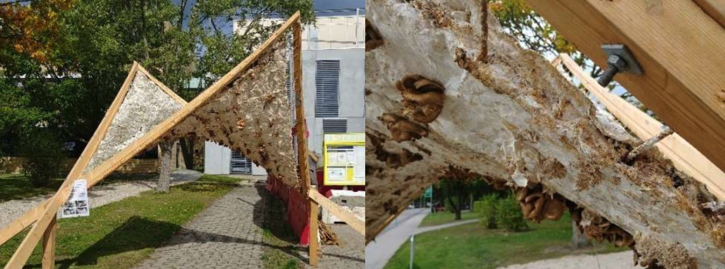
Figure 1. Experiment on a 7,5m2 pavilion grown from coffee grounds and hemp.
2.1 Regenerative biomaterials grown from waste
The concept of mycomaterials is based on translating the largest natural recycling organism to the building industry by using mycelium, to root network of fungi, as a natural binder of natural fibers. Biological building materials can be grown from virgin natural fibers and biowaste fractions such as untreated wood and natural fibers, but potentially also problematic fractions such as glued, painted and impregnated wood and textiles etc., see figure 2. Mycelium grows using enzymes to efficiently break down the plant cellulose and lignin and can potentially also break down toxic content such as heavy metals, radioactive waste, crude oil etc. [4]. As the substrate have been bound, the growth is stopped through drying or pressing, after which the material is dead and corresponds to other bio-based materials such as wood. The resulting biomaterial composites have a relative high performance in strength to weight ratio, insulation and fire- and water resistance, and are shapeable and biodegradable to replace traditional products such as cement based acoustic panels, mineral wool, particle boards etc.
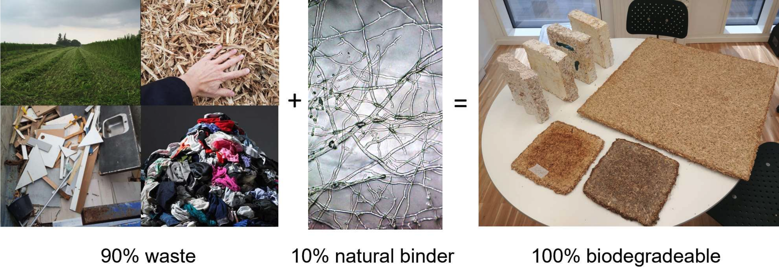
Figure 2. Material concept
The modern use biomaterials in the building industry is if most often associated with wood. Mycelium based materials has the potential to expand the possible applications of biomaterials. Meanwhile this material field of study is still in its infancy being currently experimental and unexplored. While products and research within mycomaterials have been conducted for some years, we could not access any readily available materials to build from. Only experimental projects have been made such as HyFi-tower [9].
By upcycling local biowaste provided from local waste facilities, the material concept excludes a raw material need as well as a waste problem as the material is either composted or reused as growth substrate after end use, as shown in figure 3. Furthermore, a low temperature non-intense energy production limits the embodied energy.
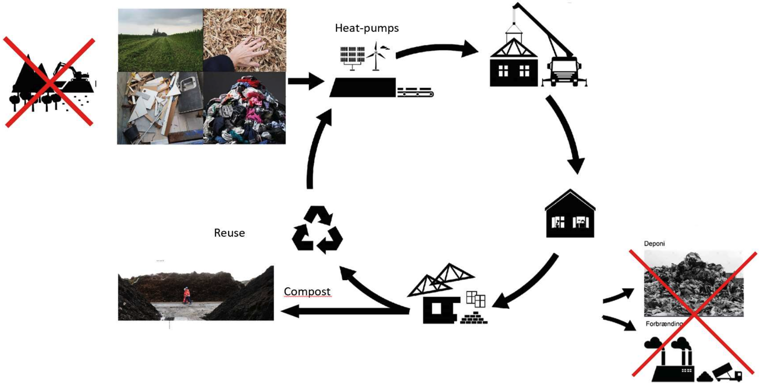
Figure 3. Circularity of material
2. METHODOLOGY
2.2 Cross sector collaboration
The positive material characteristics achieved through this simple collaboration, inspired a series of questions concerning what possibilities the material concept would enable if scaled through a larger series of cross sector partnerships. To further develop the concept, a map of required cross sector expertise was identified, see figure 4. In this set-up, stakeholders across the value chain would codevelop in order to speed up innovation and create joint business models. The focus would be aligned into investigations of material and design aspects in parallel with prototyping the market value creation through user tests and business model considerations to ensure lasting and scalable business models.

Figure 4. Production process as basis for partnerships creation
As contender in Circular Construction Challenge [6] tendered by the Danish philanthropic association Realdania, we sought partners through online social media platforms and the proposal received interest from about 23 partners globally. 15 partners from different sectors were selected to form the team “From Waste To Biomaterial” that was awarded a 6 month funded innovation process. This process would enable the interaction of the new partnerships to develop prototypes and screen the performance and design material possibilities and limitations.
2.3 Material testing and prototyping
The development and testing of the building material concept were conducted adhering to three purposes: 1) develop and mechanically test and compare recipes, 2) test design and production possibilities, 3) test the concept with end users. The intended application in buildings was oriented towards the economically low risk indoor use areas such as interior wall claddings and acoustic panels. Experiments would be based on cross breed and apply and test knowledge and ideas in new contexts across sectors. Thus, academic research would be applied at local producers, waste handlers would select waste streams and architects and clients would ideate and give feedback on design aspects. Technical performance tests and -advice would be done by a Danish test institute.
The material samples were created in two parallel “tracks” supporting two different purposes. In Track 1 mechanical tests were made using a documented protocol in a laboratory environment to produce samples. In Track 2 design prototypes was grown in various production environments using a more casual and less sterile approach in following the protocol.
2.2.1 Waste fractions. Selected by the partner in waste handling, three common and local available and potential waste fractions: clean wood, garden waste and food waste were subject for tests in Track 1. Today most of this are being send to incineration reemitting absorbed CO2, providing no environmental advantages. Economic value estimations and yearly produced volumes was provided by the local waste handler, see table 1. Fractions was divided into granulate of sol 6mm. Rapid renewable virgin hemp fibers were also included in order to enable comparison to existing mycomaterial studies.
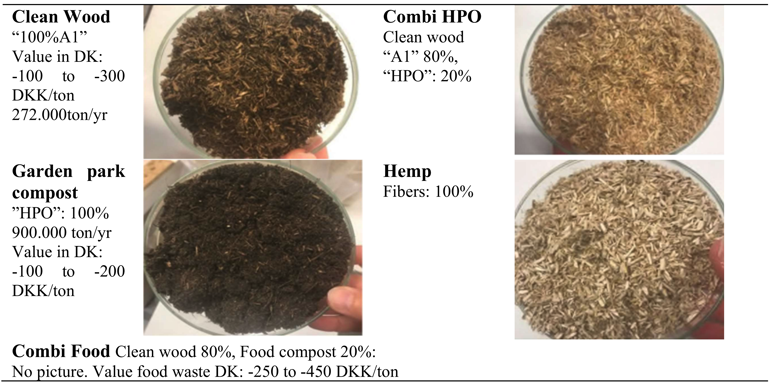
Table 1. Waste fractions tested in Track 1
For Track 2, hemp was most extensively used as substrate, but with three additional waste fractions added for testing: glued and painted wood waste (A2) and impregnated wood (A4), see table 2. Furthermore, cotton textiles were tested as the textile industry constitutes about 20% of global waste produced [5] with second to none upcycling uses, the waste handler considered this a relevant waste stream.
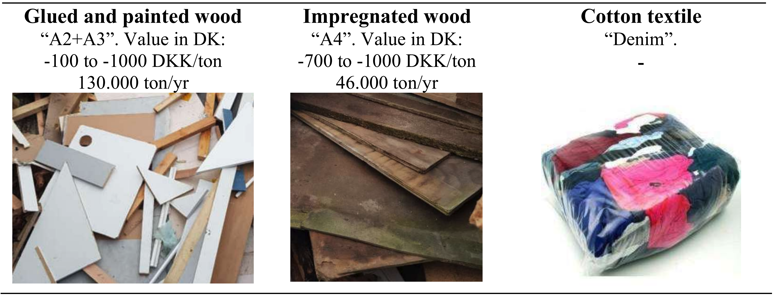
Table 2. Waste fractions tested in Track 2
2.2.2 Mechanical tests (Track 1). The mycelium- and waste-based materials would be screened against: bending, internal bonding, fire resistance, insulation, acoustics, emissions and regrowth. For each individual waste fraction three species of mycelium were tested. 3 replicates of pressed plates were made for the wall/cladding purposes, and 1 “foam” panel replicate was made for insulative and acoustic purposes. The materials were grown using a protocol of fixed mixing ratios, growth conditions and -cycles, with completion of the production by stopping the growth of the samples. The growth was undertaken in artificially conditioned environment. The growth for the pressed plates was stopped by heat pressing at 121°C for 20 min. and oven dried for 5 hours at 70°C. The foam panels the growth was stopped by oven dried for 1 hour at 121°C and afterwards oven dried overnight at 70°C.
2.2.3 Design tests (Track 2). For testing design possibilities, methods for production, formwork and post-treatment was prototyped. The growth was undertaken in a standard production environment using available standard low-tech equipment, thus enabling an economically scalable protocol as seen in table 3. The shredded biowaste was pasteurized, by submersing the substrate in water boiled at one instant, and in turn mixed with mycelium spawns. The granulated biomass was poured into forms of various shapes, and through about 15 days the mycelium would transform the biowaste. Growth conditions and the stopping of growth was ensured largely passively, with largely no energy added, except for the pasteurization and the heat pressing.

Table 3. Production environment in Track 2
3. RESULTS
This section will present the findings from the material screening tests concerning both mechanical and design characteristics.
3.1. Mechanical tests
This section presents the results obtained from screening test study performed by a Danish test institute- The study was made on three waste fractions, and one virgin natural fiber, for each three mycelium species was tested, as presented in table 4.
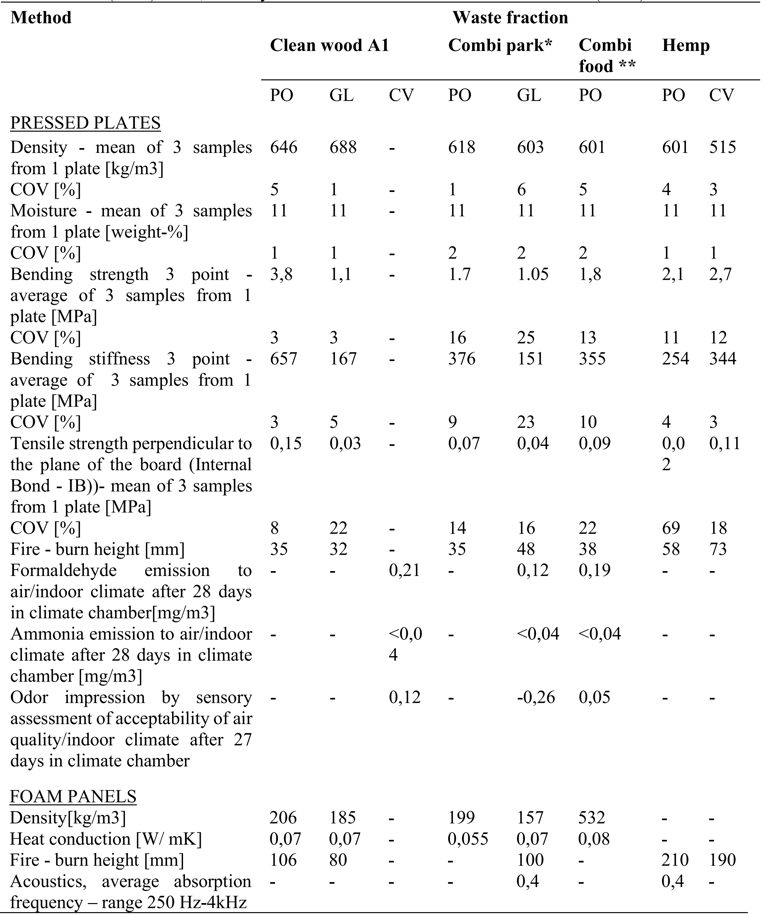
Table 4. Mechanical screening tests on 3 waste fraction and hemp for 3 mycelium species: PO = Pleurotis ostreatus, GL = Ganoderma lucidium, CV = Coriolus versicolor.* Clean Wood A1: 80% + Garden Park (HPO): 20%, **"Jelly bear" waste Clean Wood A1: 80% + waste (KOD) 20%
In table 5, pictures of the finished material is shown for both the pressed plates and the foam variant, for each waste fraction and mycelium specie.
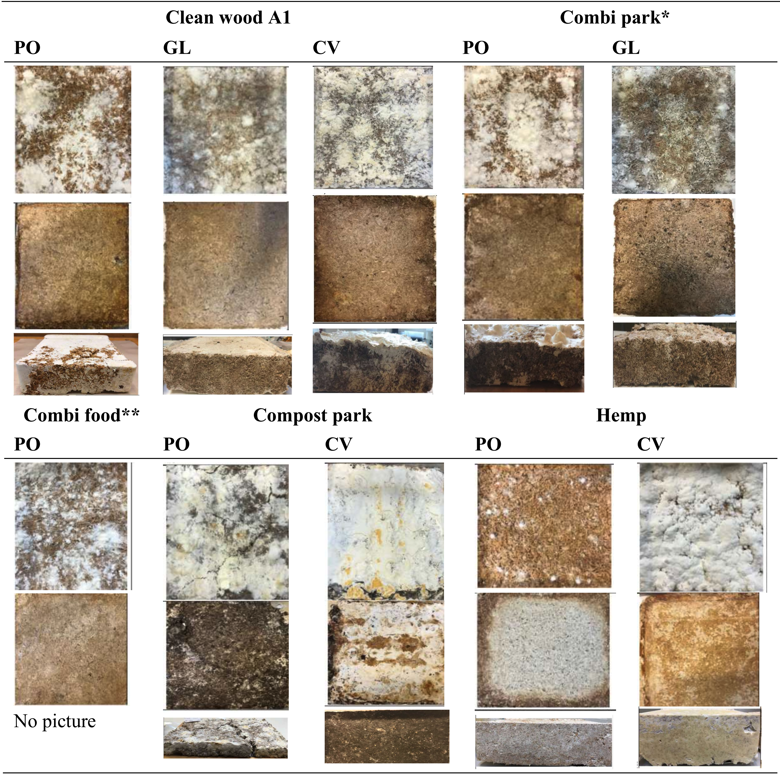
Table 5. Top picture: Foam seen from above, middle picture: foam seen from below, bottom picture plate seen
To verify whether the fungi in the material were able to regrow, once ideal water content was added, small pieces were scraped from the pressed plates and put onto petri dishes with malt-agar as a nutrient source supplemented with a mould preventive additive. For each fungus and waste stream three replicates were made and incubated at room temperature. From figure 5, CV scraped from clean wood is seen to be inactive after 3 weeks and 8 weeks of growth respectively. The same result is valid for clean wood using PO and GL and similarly other tested substrates combi HPO and hemp. This indicates that the fungi are either dead or inactive. as despite optimal growth conditions no growth of the test fungi is observed within the 8-week test.
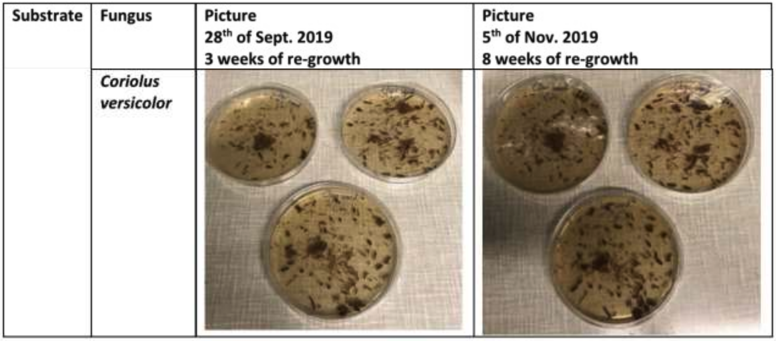
Figure 5. Test of regrowth on ager plates
All 3 screened samples degas formaldehyde above or close to the allowable emission limits for construction products, where E1 class is adopted by most EU member states for indoor use. Combi GL provides the lowest formaldehyde emission, which probably just complies with E1-class for indoor construction products. Clean wood CV and combi food PO emits formaldehyde above the E1 limit and belongs to the E2 class. No ammonia has been detected in the emissions. According to the voluntary danish indoor climate labeling M1 emission class for building materials odor impression are acceptable for Clean wood – CV, but not acceptable for Combi GL and Combi food PO.
Prototypes grown based on the problematic waste streams in Track 2, are illustrated in table 6. Through visual inspection these prototypes demonstrated robustness, lightness and surfaces characteristics similar to the prototypes based on hemp.
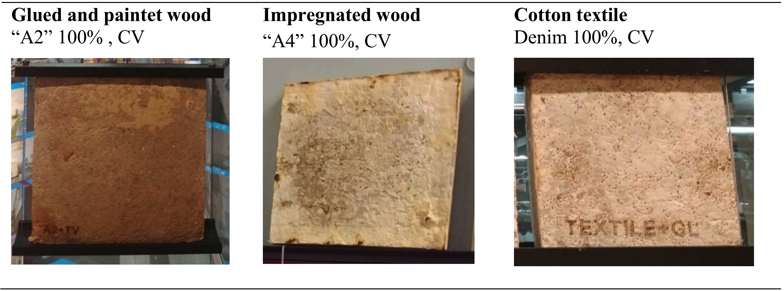
Table 6. Waste samples produced in Track 2.
3.1.1. Evaluation
The mechanical screening tests in table 4 generally produced worse growth results than achieved in Track 2 and academic studies such as [7]. The reason being that a low of growth unfortunately was achieved, as seen on the surface from the pictures in table 5, due to difficulties in securing optimal microbial growth conditions at the test institute as described in the protocol supplied by the team. The reduced quality of the growth is also indicated by the excessive large coefficients of variance (COV) as seen in table 4. The consequence being that the degrading, and binding of the natural waste fibers into mycomaterial, is less completed than what is achievable. This in turn influences all inherited material characteristics. The missing growth on the surface leads to a worsened natural fire effect, and therefore these results are disregarded. Despite the non-optimal samples, the screening however does demonstrate an achieved performance of 30% and up to 70% compared to traditional products. Other relevant findings can be summarized to:
- Clean wood, Combi park, Combi food was found overall to be interesting substrates relevant for further testing. Composted garden park (HPO) was however not found to be a suitable substrate. No regrowth occurs could be determined.
- Degasification of formaldehyde and odor was of varying acceptable threshold for formaldehyde that was above or close to the accepted limit. It is assessed that these values are higher due to the lacking degradation of the waste.
- The bending strength was tested against EN 310:1994 Wood-based panels. The results are low, the highest two samples reaching 30-40% the bending strength in comparison to a particle board of 10 MPa.
- The bending strength was tested against EN 319:1994 Particleboards and fiberboards - Determination of tensile strength perpendicular to the plane of the board. The obtained values are low, the highest two samples reaching 35-60% the bending strength in comparison to a particle board of about 0,26 MPa.
- Thermal conductively was measured with heat flow meter. The values ranging from 55-70% of a standard insulation batt of class 37.
- Reaction to fire performance where done after the principle of the small flame test (EN ISO 11925-2). The material was inhomogeneous at the surface, which had an effect on the results. According to EN 13501-1 the flame spread should not exceed 150 mm.
3.2. Design tests
The tested formwork and post-processing methods are illustrated in table 7. All methods were found as compliable methods to produce from, each with production characteristics that enables different end results as shapes and surfaces characteristics. Post-treatment methods demonstrated that the material can be post processed by cutting, screwing polishing and coloring for fitting, fixation or aesthetic purposes.
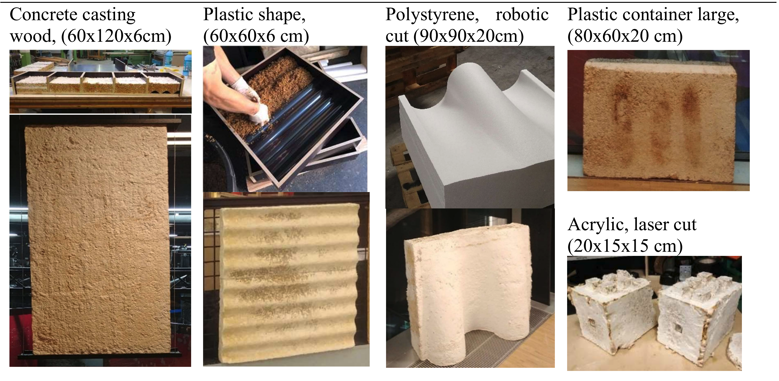
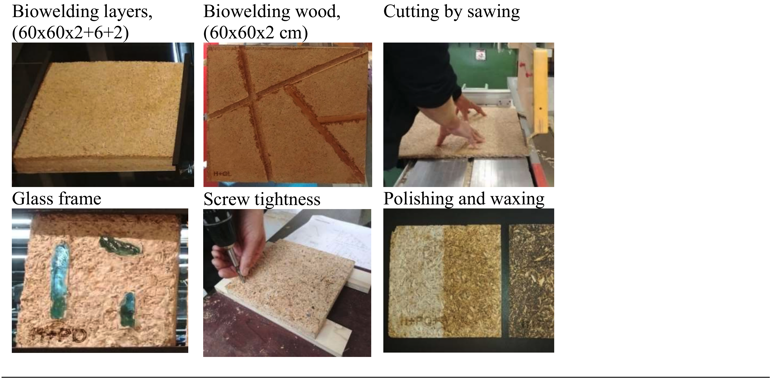
Table 7. Formwork and post-treatment methods
The prototypes were shown and tested with a range of users (architects, building clients and contractors), see figure 6. Good feedback was received from architects and clients who found the combination of circularity and natural material qualities and design possibilities valuable. When asked regarding perceived applications proposals for cladding for furniture or sheds, as well as acoustic panels or functional insulation was put forward. Regarding the aesthetics a spread of likeness toward the natural “random” surface as opposed to the smooth pressed and coloured surfaces were identified.

Figure 6. Testing of prototypes with users
3.3. Collaboration, industry and business models
Partnerships was formed between Søren Jensen Consulting Engineers and the partners in the following sectors: academia, architecture, waste handling, material and formwork production, food production, business development and test institutes, see figure 7. Having different incentives ranging from creating new business models, to participate in knowledge development and insights, all team members were motivated to exchange know-how and considerations regarding production, design and business models.
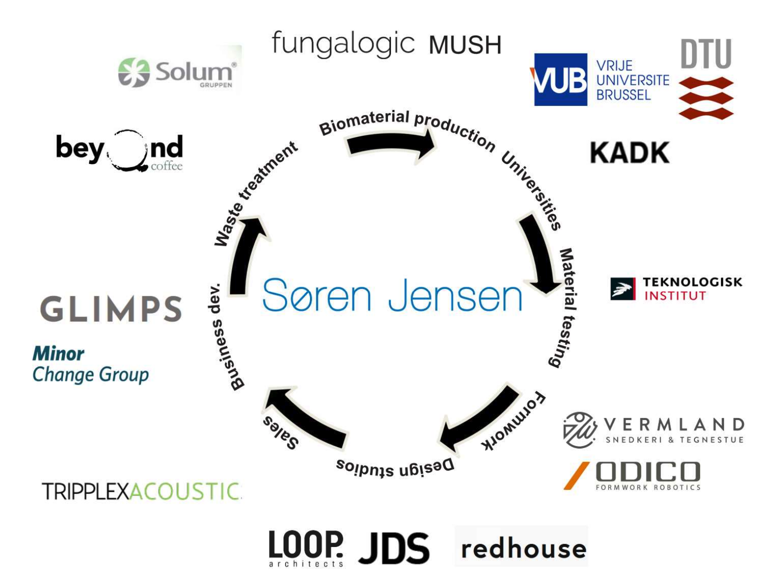
Figure 7. Project partners spanning multiple sectors
Waste fractions was selected by the waste handler to support a business case basis, but despite using waste material of negative economic value the business model was challenged by a very low technological readiness level. The choice of developing mid- to high-end interior design building components was derived by two considerations. One being the lower risk associated with not integrating elements into the building envelope, along with the highly competitive low-end market on products such as insulation. Two, due to the feedback from the user tests in which the design qualities were approved, addressing such qualities could increase unit costs to cover the high production costs. The findings on cost estimations was, that equal or reduced prices could be achieved compared to corresponding designed acoustic panels.
While we are not first movers on the market, our experience was, that the regional aspect, due to the limit in capacity from the establish producers, becomes of high relevance. Through the meet ups with users we experienced a keen interest for the material concept. By the end of the Circular Construction Challenge, two clients have declared their interest for the interior prototype products. The concept was awarded the Energiforum Innovation price 2019 [8] acknowledging the need for such value creation and the effort to push the building industry into co-creating and regenerative direction.
4. DISCUSSION
In this section our experiences working co-creatively with wastebased mycomaterials are discussed in terms of the assessed both technological and industry potentials and limitations, as summarized in table 8.
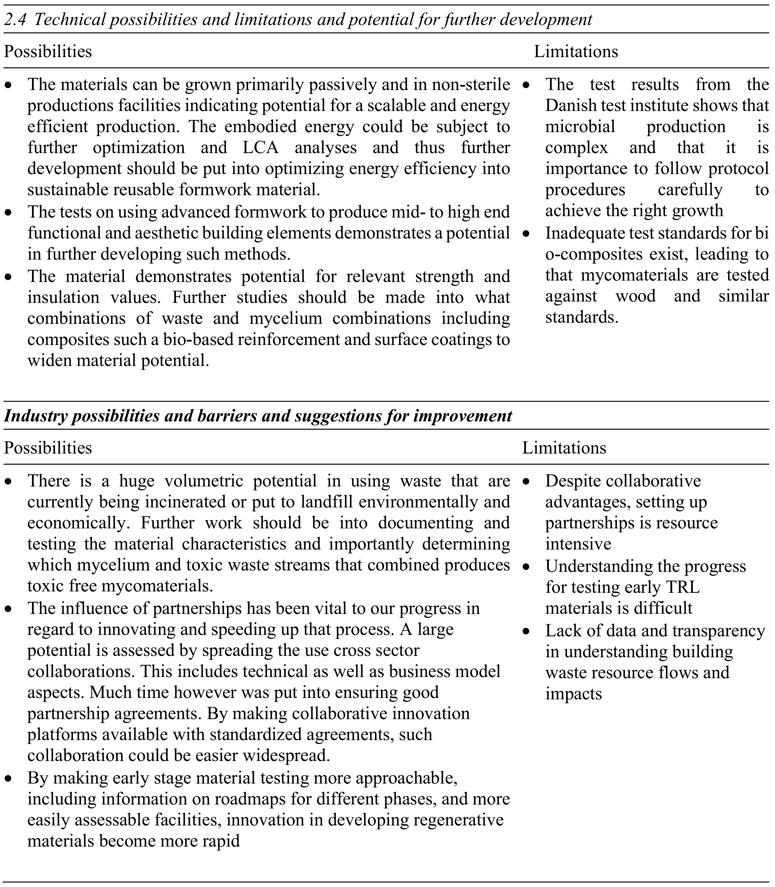
Table 8. Technological and industry possibilities and limitations
5. CONCLUSION
The availability of circular materials and regenerative materials are, despite a large need, very limited. Mycomaterials being an experimental field of research, are not known or widespread in the industry. Through a collaboration between sectors, new interactions enabled screening tests concerning the viability of using mycelium to enable upcycling of local waste to produce valuable interior building components. This while exploring possibilities in building design and market aspects in overall aim of enabling regenerative building design. By applying an academic protocol to industry know-how on waste treatment and building design, a series of findings on wastebased mycomaterial performance characteristics on three waste fractions and three mycelium species was made. In addition, three problematic waste fractions all had confirmed growth. While the test institute struggled at archiving the archivable growth rate, performance of 30-70% compared to corresponding traditional products was achieved, demonstrating a relevance of the material technology with a large room for improvement. Furthermore, the critical aspects of risk of regrowth was rejected and emissions having acceptable close to acceptable value. In the used production facilities, the biomaterials were created with energy using low tech equipment enabling low carbon footprint potential. Through user tests interior building applications was identified as viable place to introduce mid-to high end products. These early insights indicate that the technology has a potential to create the foundation for new circular biomaterials with a design and market value that can enable viable business models. Based on experiences from the process, the technical and industry potentials of wastebased mycomaterials was discussed as having large potentials for further development. This includes, among other things recipe and production optimization and making co-creation and experimentation more easily assessible to accelerate innovation, in the aim of enabling regenerative building design.
REFERENCES
[1] https://ec.europa.eu/environment/waste/construction_demolition.htm
[2] https://www.worldgbc.org/embodied-carbon, 2019
[3] Growing a pavillon from innovative waste- and myceliumbased biomaterials, Jon W. Strunge, ISWA Bilbao, 2019
[4] Mushroom as a product and their role in mycoremediation, Shweta Kulshreshtha, Nupur Mathur and Pradeep Bhatnagar, AMB Express 2014
[5] https://www.unece.org/fileadmin/DAM/timber/meetings/2018/20180716/UN_Partnership_on_S ustainable_Fashion_programme_as_of_6-7-2018.pdf
[6] https://circularconstructionchallenge.org/
[7] Mechanical, physical and chemical characterisation of mycelium-based composites with different types of lignocellulosic substrates, Elise Elsackera, Simon Vandelook, Joost Brancart, Eveline Peeters, Lars De Laet, bioRxiv 2019
ACKNOWLEDGMENTS
The author wishing to acknowledge assistance from colleagues and partners and financial support from Realdania.

